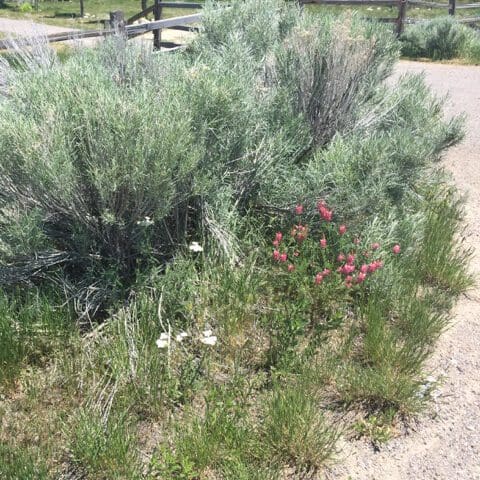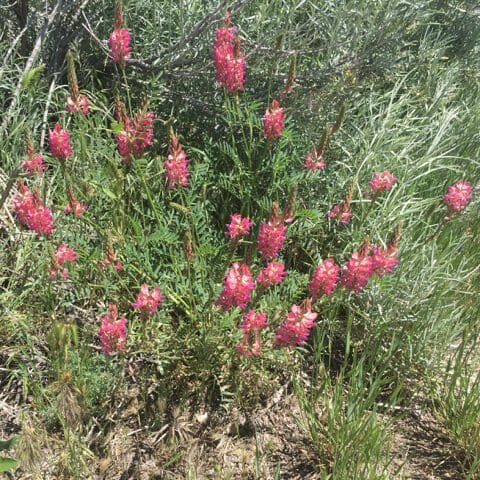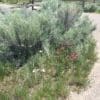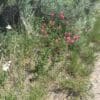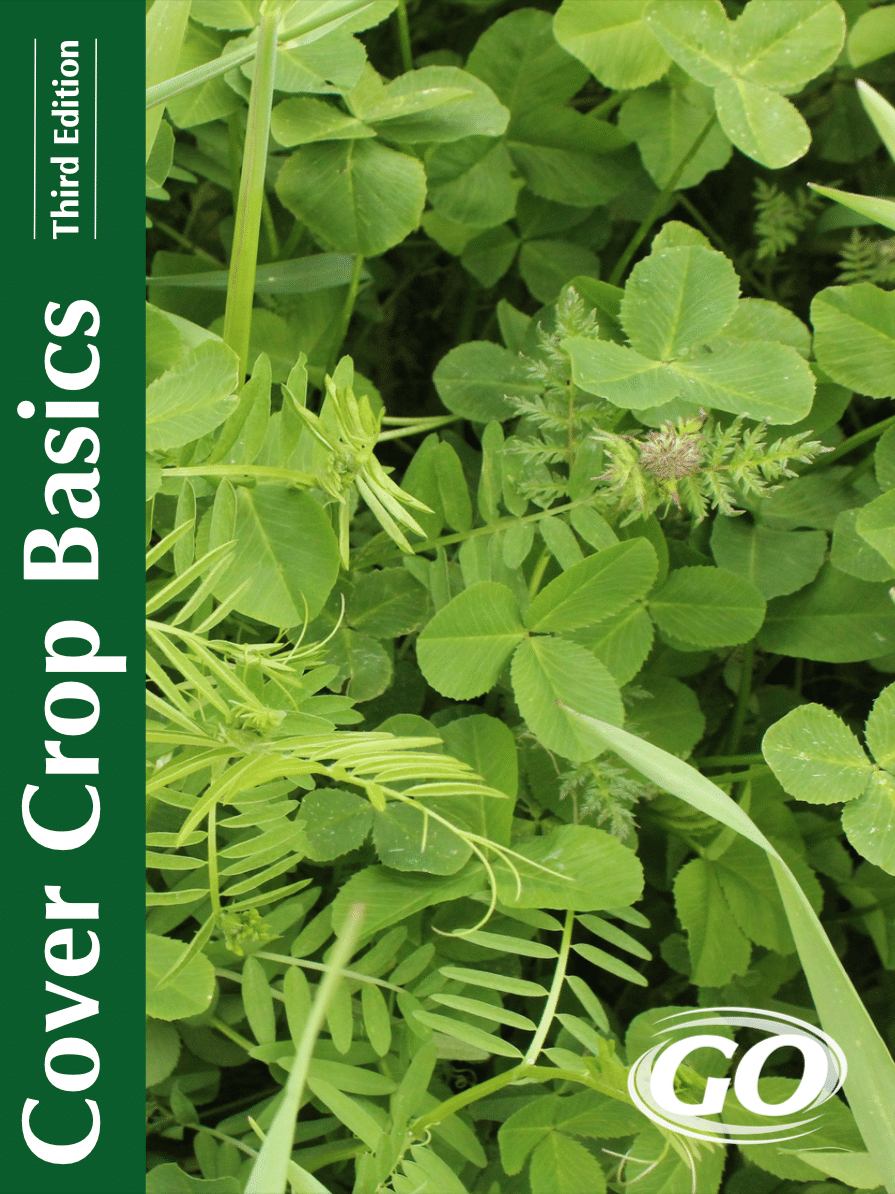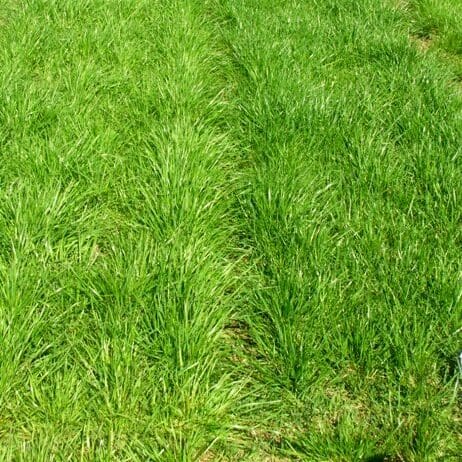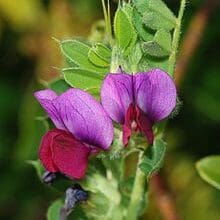Eski Sainfoin
- Scientific name: Onobraychis viciifoli
- Selected for its winter hardiness
- Needs 13 inches of annual precipitation
- Excellent one-cut dryland hay species
- Preferred over alfalfa by livestock
2934 in stock
Eski sainfoin (Onobraychis viciifoli) was selected for winter hardiness in trials at Sidney, Montana. Eski is recommended for dryland areas receiving at least 13 inches of annual precipitation and irrigated land yielding only one or two cuttings.
Sainfoin is deep-rooted and very drought-resistant, provided the annual rainfall is 12 inches or over. It yields best on deep, well-drained soils, and will not withstand wet soils or high water tables. Tests show that it will not tolerate saline soils and that it is not as winterhardy as the locally-recommended cultivars of alfalfa.
Sainfoin grows taller than alfalfa, its stem is hollow, there are many leaflets (like a vetch) and its flowers, which are pink, are borne on a raceme. The “seed” used to establish this crop is, in fact, a pod which contains a single seed. Even without the pod, the true seed is large (for a legume); there are only 28,000 seeds per pound. Eski Sainfoin
Sainfoin has good drought resistance and grows well on a variety of soils. It does especially well on high lime, well-drained soils of high fertility. It does not do well on soils which are wet or have a high water table. It has a low tolerance to flooding, waterlogging or even high water table. It is intolerant of acidity and salinity.
Sainfoin begins growth in the spring about the same time as alfalfa, but flowers one to two weeks earlier. First cutting hay yields have exceeded those of alfalfa in Montana, but alfalfa yields are greater in subsequent cuttings. On areas where hay production is limited to one dryland cutting, or because of a shortage of irrigation water, it may replace alfalfa. Eski Sainfoin
Sainfoin is very palatable and is grazed by livestock in preference to alfalfa. It is relished by deer. Although very coarse, the herbage is highly nutritious. Compared with alfalfa, forage dry-matter yields of sainfoin are about 20 percent lower under dryland conditions, and may be 30 percent or more lower in irrigated areas. Onobrychis species have never been known to cause bloat nor is it attacked by alfalfa weevil. It is highly palatable to both sheep and cattle, being preferred over alfalfa. It may be grazed or used for hay, either alone or in mixtures with grasses. It grows well with Russian wildrye and crested wheatgrass. Under irrigation, sainfoin is shorter-lived than alfalfa, but rotational grazing has been shown to prolong its life.
Sainfoin is well suited to hay harvesting as it grows upright and is easily cut. It is somewhat higher in moisture content than alfalfa. Since regrowth is very poor, it is best suited to taking one clipping at about the half- to full-bloom stage. Unlike alfalfa, it does not drop its lower leaves; stems remain succulent as the plant matures so that quality does not decrease so rapidly. Yield is often better than that of alfalfa for one clipping, but only 80 to 90 percent as high when two cuttings per season are compared. It competes poorly in mixtures with aggressive grasses and, although total yield is usually not affected, the proportion of sainfoin decreases. The advantages of sainfoin for pasture use include excellent quality and palatability that give superior animal performance without the danger of bloat. Compared with orchardgrass in irrigated areas, it yields about one-third less, regrows more slowly after grazing and has a shorter productive life. However, grazing in the bud or early bloom stage, and keeping the grazing height above about 8 inches, will lengthen productive life from two to three to about six years in irrigated areas.
It is adapted to dryland pastures as well, and grows satisfactorily in mixtures with bunchgrasses such as Russian wildrye or crested wheatgrass. However, total yields are slightly higher when sainfoin is grown alone. Sainfoin is a very early-growing legume, and it may tolerate light grazing during the bud stage and still yield a good crop of hay. Residual yield after hay cutting may be grazed, but once this species reaches full bloom, regrowth is very poor. Eski Sainfoin
Minimum order quantity: 5 Pounds
***Click on the “Quick Plant Facts” tab above for more information.
Sainfoin NRCS Plant Guide
Sainfoin NRCS Plant Guide
PDF version of NRCS Plant Guide.
Prepared By: Derek Tilley, Range Conservationist (Plants) USDA NRCS Plant Materials Center, Aberdeen, ID
Dan Ogle, Plant Materials Specialist USDA NRCS Idaho State Office, Boise, ID
Loren St. John, Manager USDA NRCS Plant Materials Center, Aberdeen, ID
Species Coordinator: Dan Ogle, Plant Materials Specialist USDA NRCS Idaho State Office, Boise, ID
Cover Crop Basics
An informative, authoritative guide to cover crops. Very comprehensive, and covers all geographic regions of the USA. Published by GO Seed.
Who is Great Basin Seed?
Great Basin Seed is a seed company that specializes in seed sales and consultation for home, ranch, farm, range and reclamation. We have been a leader in the seed industry since 1974.
Our History
We've been in the seed business since 1974.
What We Offer
We offer seed for home, farm, ranch, range and reclamation projects.
Meet the Gang
We have the best employees in the world! We are proud of the work they do, and trust them to serve you!
Right: Company founder Lloyd and his wife Paula Stevens in a wildflower seed production field circa 1977
Helpful Links
Additional information about this product can be found on the academic websites linked below.
Synonyms
Many plants have more than one common and scientific name. We've listed a few of them below.
- Eski Sainfoin
- Onobrychis viciifoli var. eski
Quick Plant Facts
| Common Name: | Eski Sainfoin |
|---|---|
| Scientific Name: | |
| Lifespan: | |
| Origin: | |
| Plant Type: | |
| pH Tolerance: | |
| Seed Count | 30000 |
| Growth Height: | |
| Root Form: | |
| Planting Rate: | |
| Min. Precipitation | 15 to 18 Inches |
| Best Time to Sow: | |
| Max Sowing Depth: | |
| Growth Season: | |
| Sun & Shade Tolerance: | Full Sun |
| Elevation of Occurance: | |
| Hardiness Zones: |




